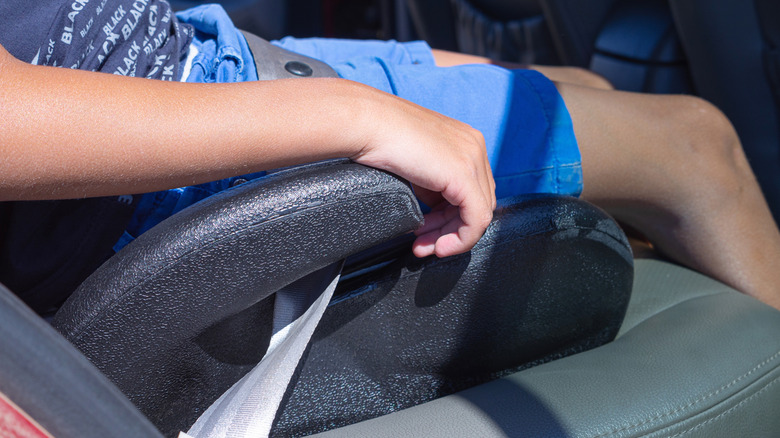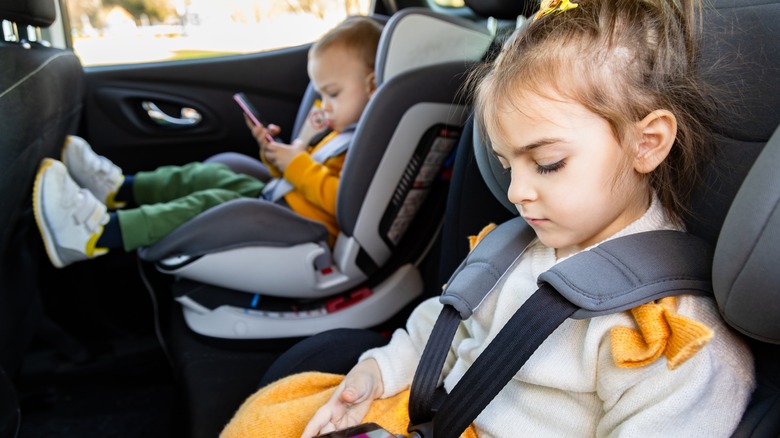California Isn't Making Teens Use Booster Seats – Here's What The Bill Actually Says
Properly restraining a child in a car seat, which you should avoid buying used, or booster seat, is necessary to ensure safety. It's a common practice in every state and without it, the risk of injuries is multiplied to scary levels. But a new bill recently passed in California has some people scratching their heads, assuming that teenagers will actually have to use boosters in the future. But in reality, the bill is redefining what "properly restrained" actually means.
A new 5-step test will be used, mandating that a child under the age of 16 must sit back against the seat. The minor's knees must bend over the seat's edge, and the shoulder belt must go over the chest, not around the neck. The seat belt across the lap must be low enough to touch the thighs, and finally, the minor must be seated and buckled in like this for the entire ride. Originally authored by California State Assembly member Lori Wilson, the new bill is set to take effect in January of 2027.
The misunderstanding for many people is likely in the use of the word "child," which sounds like a little kid, who's probably sitting in a booster seat. Plus, the 5-point test sounds like it could be related to some type of car seat, which probably isn't helping matters. In the end, the new law isn't about age at all, but size. The seatbelt's fit, and the minor's position on the seat, are the most important elements.
California's history of child passenger safety
As of this writing, California's law regarding minors and their position in a car focuses mostly on age and height. Kids under the age of 8 and under 4'9" must use a child passenger restraint system. Children over 8-years-old can ride in the seat using a standard seat belt, as long as it fits properly. This means the belt must be across a child's hips or thighs, with the shoulder belt being over the chest. This law applies to all passenger cars, taxis and buses, though school buses don't have seat belts.
California's been ahead of the curve and was actually the first state to pass a booster seat law. The law began in 2002, with the state continuing to revisit the issue over the years. The state's work in this area is just one example of how laws can improve overall child passenger safety. In fact, a properly installed car seat or booster seat can reduce a child's injury in a crash by more than 80 percent.
California's history with passenger and driver safety goes back even further. The state was the first in 1955 to mandate that all new cars come with lap belts installed. This was before seatbelts were commonly worn, and before the U.S. Congress passed national laws addressing car safety. While one U.S. state has no law requiring adults to wear seatbelts, it took over 30 years, in 1986, before wearing seatbelts became mandatory in California.

